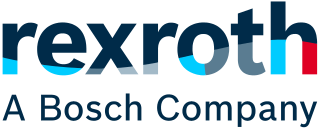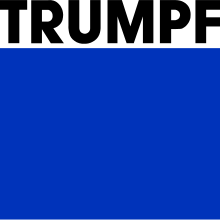
Laser cutting is a technology that uses a laser to vaporize materials, resulting in a cut edge. While typically used for industrial manufacturing applications, it is now used by schools, small businesses, architecture, and hobbyists. Laser cutting works by directing the output of a high-power laser most commonly through optics. The laser optics and CNC are used to direct the laser beam to the material. A commercial laser for cutting materials uses a motion control system to follow a CNC or G-code of the pattern to be cut onto the material. The focused laser beam is directed at the material, which then either melts, burns, vaporizes away, or is blown away by a jet of gas, leaving an edge with a high-quality surface finish.

Sheet metal is metal formed into thin, flat pieces, usually by an industrial process.
Trotec Laser is an international manufacturer of advanced laser technology for laser cutting, laser engraving and laser marking. The company was founded in 1997, branching off from a research and development department within its parent company Trodat.

Vero Software is a company based in Cheltenham, England, that specialises in CAD CAM.

Bosch Rexroth AG is an engineering firm based in Lohr am Main in Germany. It is the result of a merger on 1 May 2001, between Mannesmann Rexroth AG and the Automation Technology Business Unit of Robert Bosch GmbH, and is a wholly owned subsidiary of Robert Bosch GmbH. Bosch Rexroth employs over 31,000 people worldwide, and achieved total revenue of 6.2 billion euro in 2021.
Ophir Optronics Solutions is a multinational company that sells optronics solutions. The company develops, manufactures and markets infrared (IR) optics and laser measurement equipment. Founded in 1976, the company was traded on the Tel Aviv Stock Exchange from 1991 until it was acquired, and was a constituent of its Tel-tech index. Headquartered in the Har Hotzvim industrial park in Jerusalem, Israel Ophir owns a 100,000-square-foot (9,300 m2) complex that includes the group's main production plant. Ophir has additional production plants in North Andover, Massachusetts and Logan, Utah in the US and sales offices in the US, Japan and Europe. In 2006, Ophir acquired Spiricon Group, a US-based company in the beam-profiling market. Ophir's sales increased sharply from $45 million in 2005 to $74 million in 2007. During 2007, Ophir established a Swiss-based subsidiary to market lenses and components for surveillance and imaging systems in Europe. In May 2010, Ophir acquired Photon Inc., another US-based beam-profiling company. Newport Corporation, a global supplier in photonics solutions, completed its acquisition of the Ophir company in October 2011. In 2016, metrology firm MKS Instruments bought Newport Corporation, including the Ophir brand, for $980 million.

The Berthold Leibinger Innovationspreis is an award for given to those who have created applied laser technology and innovations on the application or generation of laser light. It is open to participants worldwide. It is biennially awarded by the German non-profit foundation Berthold Leibinger Stiftung. Three prizes are awarded worth 100,000 euros. The prize winners are selected from eight finalists that present their work person in a jury session. The jury is composed of international experts from different fields.
The Berthold Leibinger Zukunftspreis is an international award for "excellent research on the application or generation of laser light". Since 2006, it is biennially awarded by the German non-profit foundation Berthold Leibinger Stiftung as part of its Laser Prizes, with an amount of 50,000 euros.
The German foundation Berthold Leibinger Stiftung was founded in 1992 by the engineer, entrepreneur and patron Berthold Leibinger in Ditzingen near Stuttgart, Germany. The non-profit foundation is dedicated to cultural, scientific, church related and social issues. The capital stock amounts to 16.6 Million Euros. Since 2000 the foundation biennially awards the international innovation prize Berthold Leibinger Innovationspreis for applied laser technology. The Berthold Leibinger Zukunftspreis honors milestones in research on the application or generation of laser light since 2006. The Leibinger foundation supports the American Academy in Berlin Fellow's program.

Berthold Leibinger was a German mechanical engineer, businessman, and philanthropist. He was the head of the German company Trumpf, a leader in laser technology, and founder of the non-profit foundation Berthold Leibinger Stiftung. He served on the advisory board of major companies and was awarded an honorary doctorate by the University of Stuttgart.
Founded in 1873, the Dieffenbacher Group, located in Eppingen in the administrative district of Heilbronn in Baden-Württemberg, is a family-run enterprise in the field of mechanical engineering, plant systems engineering, and construction. They develop and manufacture press systems and complete production systems for the wood composites, automobile, aerospace and recycling industries. In addition, the company develops power plants and process equipment for energy generation and waste heat recovery.

Comau is an Italian multinational company in the automation field based in Turin, Italy. It is a part of the automaker Stellantis. The company is present in 13 countries and employs 4,000 people.

Selective laser melting (SLM) is one of many proprietary names for a metal additive manufacturing (AM) technology that uses a bed of powder with a source of heat to create metal parts. Also known as direct metal laser sintering (DMLS), the ASTM standard term is powder bed fusion (PBF). PBF is a rapid prototyping, 3D printing, or additive manufacturing technique designed to use a high power-density laser to melt and fuse metallic powders together.
JK Lasers was a global laser manufacturer based in Rugby, Warwickshire, England. Established by Ron Burbeck and Dr Jim Wright MBE in 1972, the company first launched a range of pulsed lasers using ruby, YAG and glass laser rods. This was followed by the MS-Series of Nd:YAG laser systems, designed for industrial welding, cutting and drilling applications.
Amada Weld Tech, a subsidiary of Amada Weld Tech Co., Ltd., designs and manufactures equipment and systems for resistance welding, laser welding, laser marking, laser cutting, laser micro machining, hermetic sealing, micro tig welding, and hot bar reflow soldering and bonding. Established in 1948, AMADA WELD TECH is headquartered in Monrovia, California, US. The company's equipment is used in numerous industries, chief among which are medical, aerospace, automotive, batteries, and electronic components. Amada Weld Tech has approximately 200 employees, with 7 sales and manufacturing offices serving about 12,000 customers worldwide. More than 80,000 items are manufactured annually. The company is certified to ISO 9001:2015, China Compulsory Certificate (CCC), European Conformity (CE), and Canadian Standards Association (CSA) quality certifications.
Frank Barkow is an American architect. His practice Barkow Leibinger, founded with his partner Regine Leibinger, is known for industrial architecture, domestic and cultural projects, as well as for the two landmark office towers, the TRUTEC Building in Seoul (2006) and the Tour Total in Berlin (2012).

Nicola Leibinger-Kammüller born Leibinger is an American-born German businesswoman. She is the president and chairwoman of the Managing Board of the Trumpf GmbH + Co. KG, of which she has been a member since 2003, after having joined the company in 1985 as a public relations and branding specialist.
SLM Solutions Group AG, headquartered in Lübeck, Germany, is a manufacturer of 3D metal printers listed on the stock market and co-owner of the word mark SLM. The shares of SLM Solutions Group AG have been listed in Prime Standard of the Frankfurt Stock Exchange since May 9, 2014.

Jürgen W. Czarske is a German electrical engineer and a measurement system technician. He is the director of the TU Dresden Biomedical Computational Laser Systems competence center and a co-opted professor of physics.
















